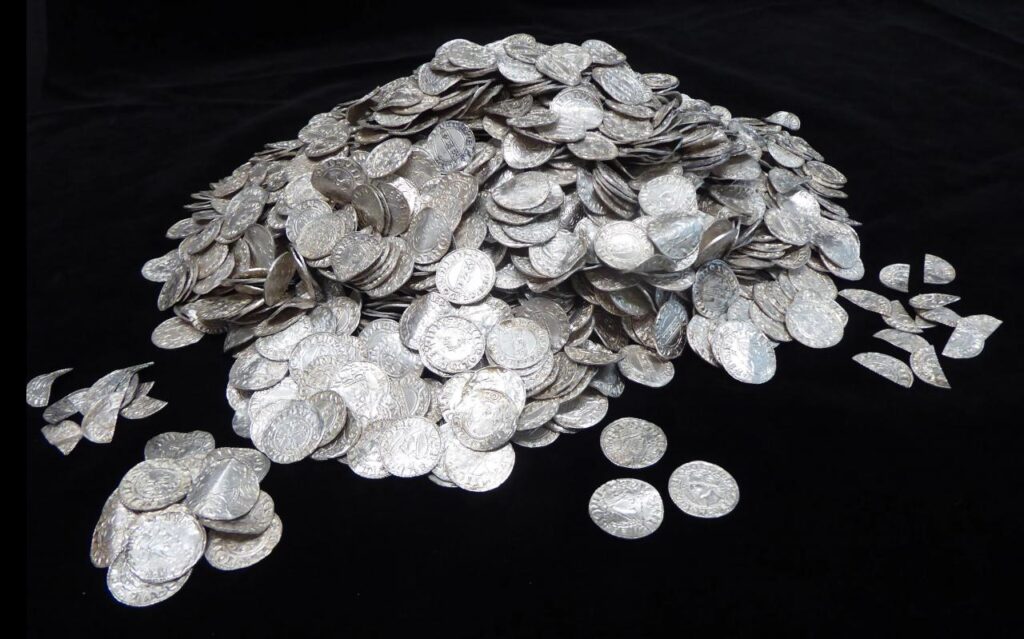
A massive hoard of 1,000-year-old silver pennies found by a group of people learning how to use metal detectors in 2019 were recently valued at $5.6 million (£4.3 million), making it the highest valued treasure in England.
In January 2019, seven people with metal detectors “on a speculative trip to a soggy field” found the 2,584 coins in the Chew Valley area of Bath and North East Somerset. The group spent four to five hours digging up the hoard and were not deterred by a massive thunderstorm. “We didn’t leave the site until we thought we’d got all the coins,” Adam Staples, one of the finders, told the Derby Telegraph in 2019. “We were soaking wet by the time we finished.”
A press release from the British Museum called the pennies, also known as the Chew Valley hoard for where they were found, “one of the most remarkable finds reported under the Treasure Act 1996”.
The hoard consists of King Harold II pennies, the last Anglo-Saxon king of England, and William the Conqueror coins from the time of the Norman Conquest (1066–1068 AD). The group first reported the find to a local liasons officer as part of the British Museum’s Portable Antiquities Scheme, which records archaeological finds made by members of public and also handles local reports of items that fall under the Treasure Act.

On October 22, the charity South West Heritage Trust announced it had acquired the “unprecedented” hoard of silver pennies through major funding, including grants from the National Lottery Heritage Fund and Art Fund.
The charity was awarded a grant of more than £4.4 million ($5.7 million) by The National Lottery Heritage Fund and £150,000 ($195,000) from Art Fund for the acquisition and associated engagement project. A press release from the British Museum noted the South West Heritage Trust “will be able to apply for a further grant at a later date for an engagement programme and the permanent display of the hoard at the Museum of Somerset.”
“It’s fantastic, unbelievable,” Staples told The Guardian on October 21. “It was a feeling of amazement. To find one coin was great. Then within a few minutes a few more, then 10 coins, 50 coins. It was ever increasing. And your emotions are just multiplying. It has definitely changed my life. It was like holding history in your hand. And, obviously, the financial side of it is brilliant as well.”
Half the proceeds will go to the seven finders while the other half will go to the landowner of the field, who the Guardian reported is not being named. “We all agreed to share it and we’re all happy with the agreement,” said Staples, who runs an auction house specializing in ancient coins.
In 2019, Staples told the Daily Telegraphthat if the coins were declared an official treasure, the proceeds would “totally change” life for him and his partner Lisa Grace. “We will be able to buy our own property – it’s freedom!”
The coins will go on display at the British Museum on November 26 before being exhibited at other museums in the UK, with their final destination at the Museum of Somerset.


